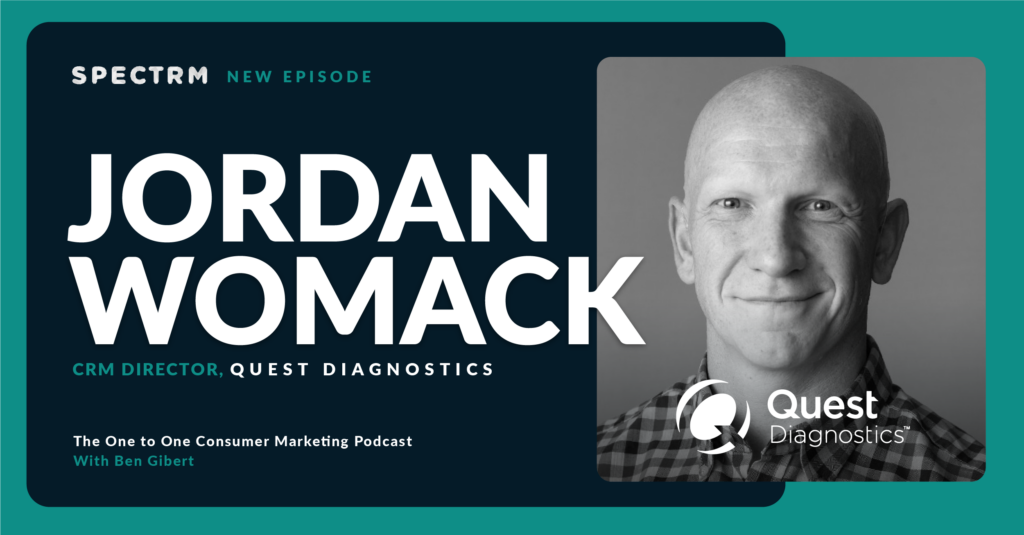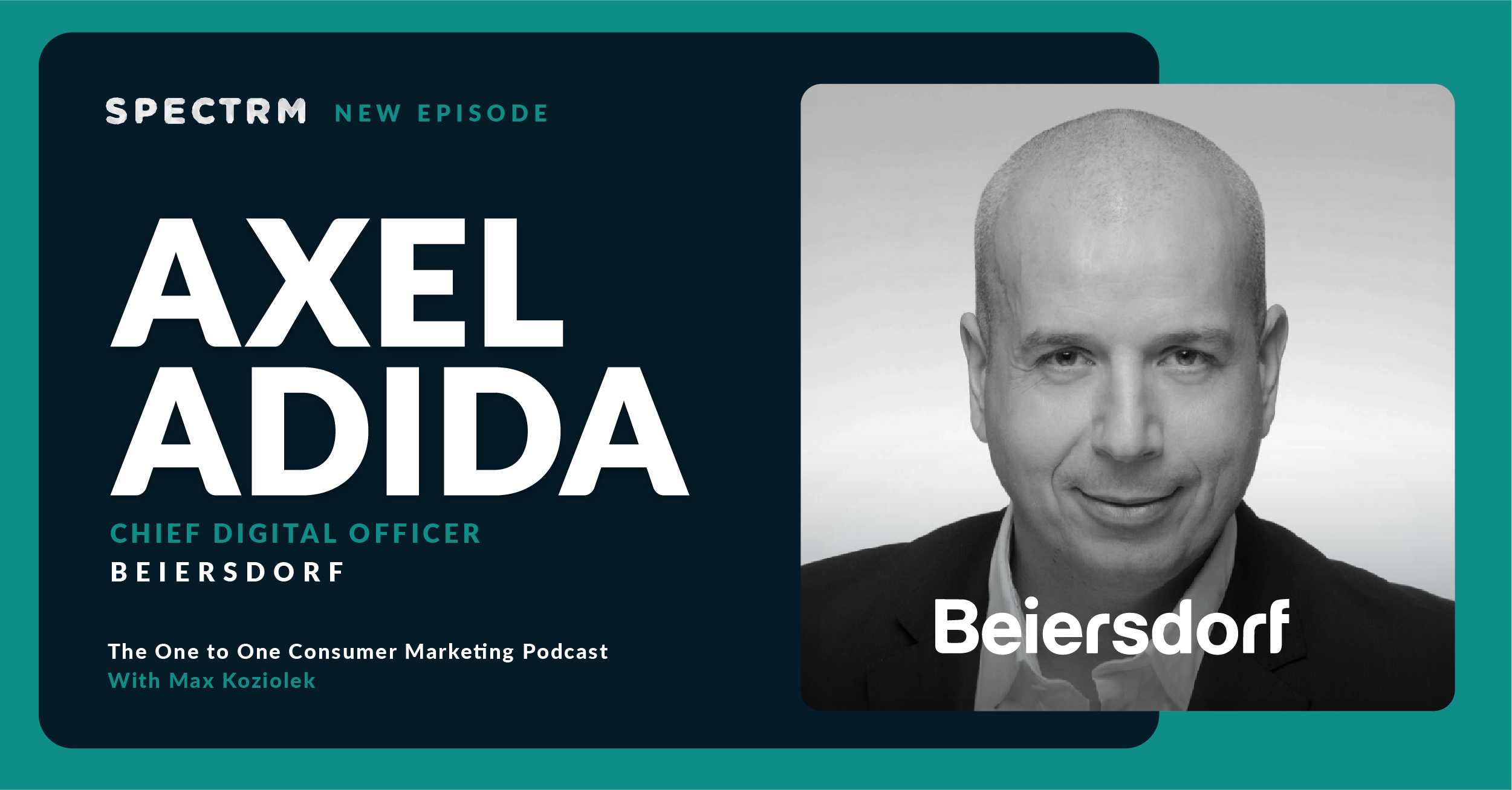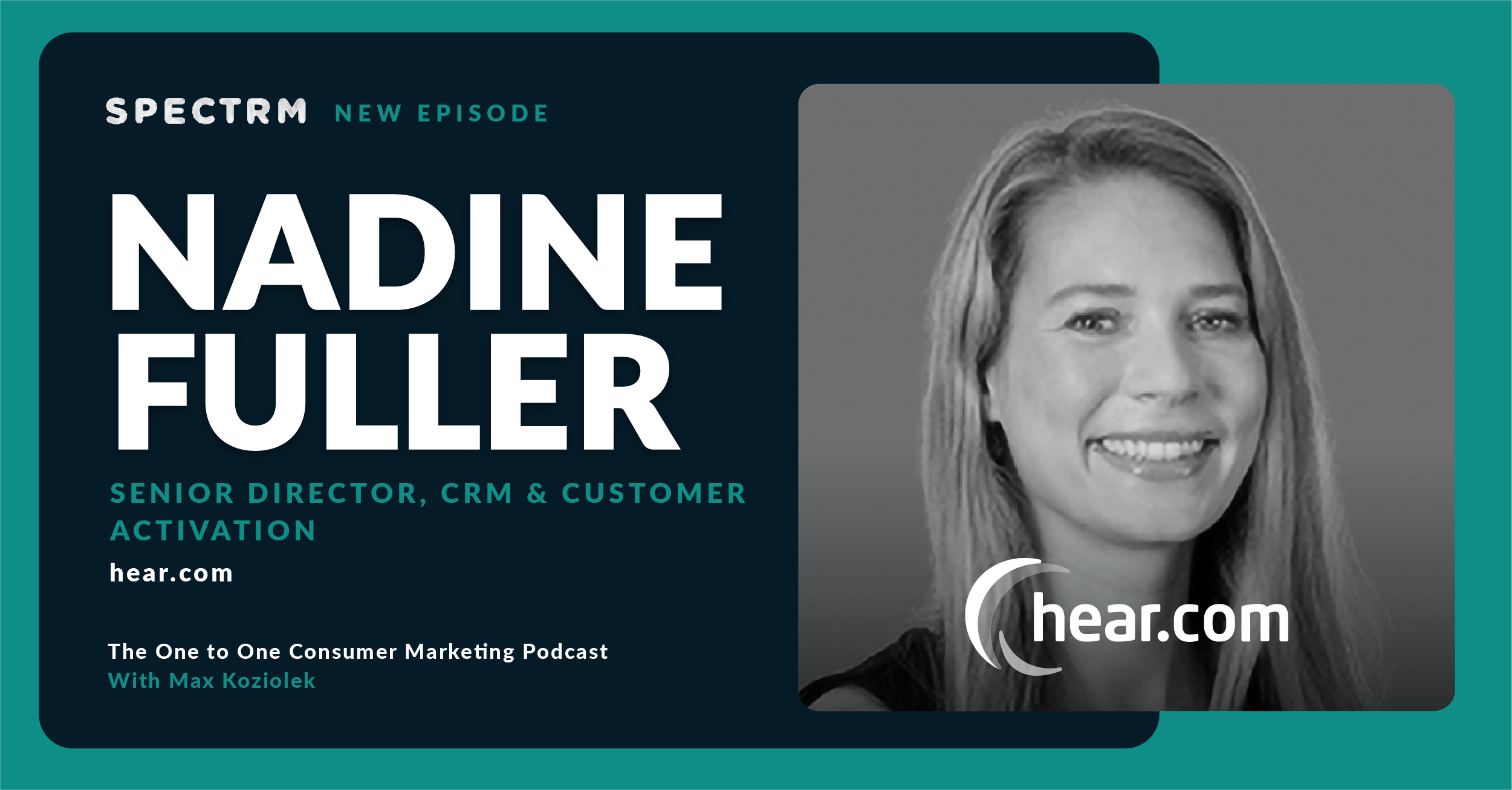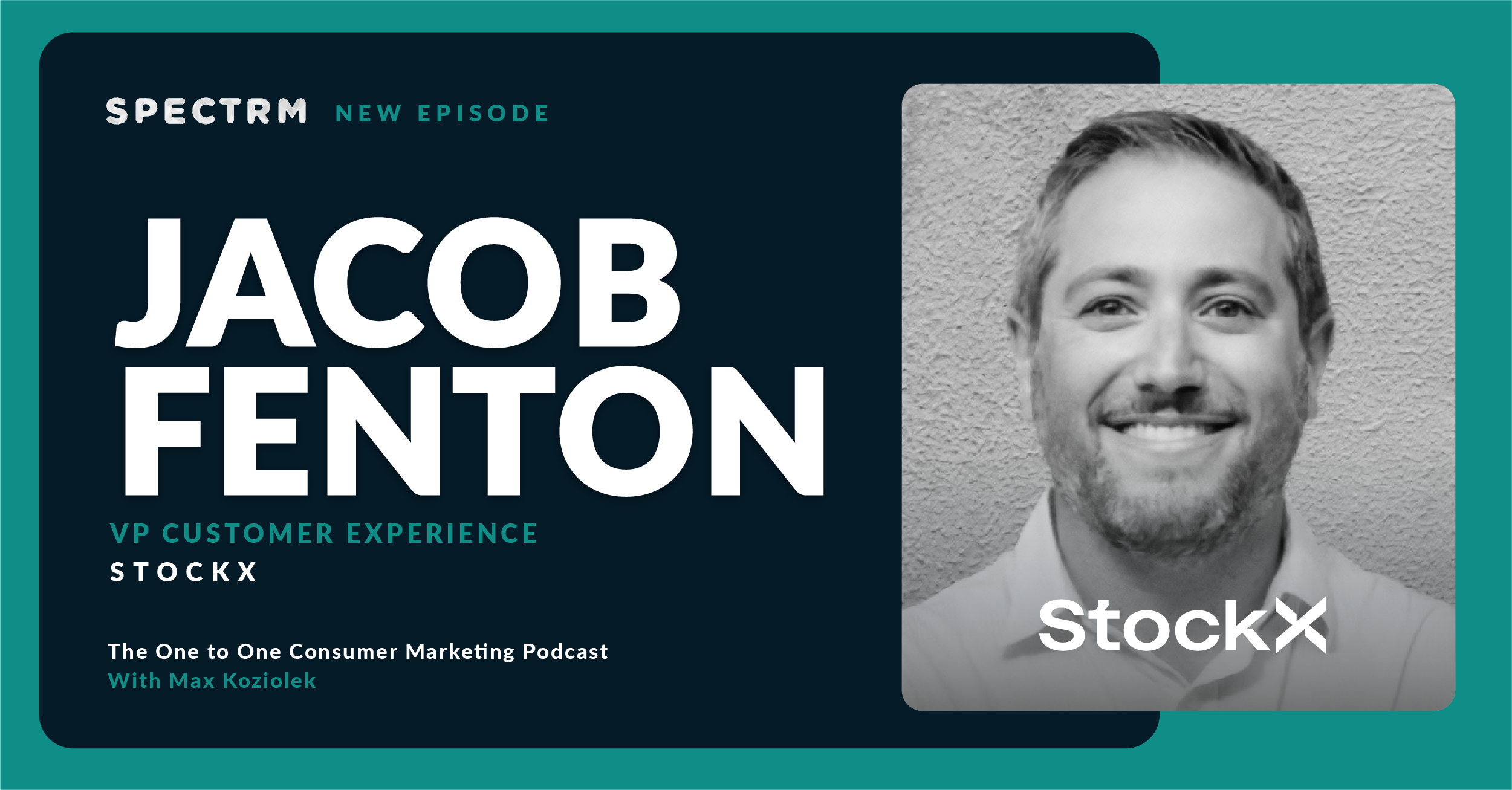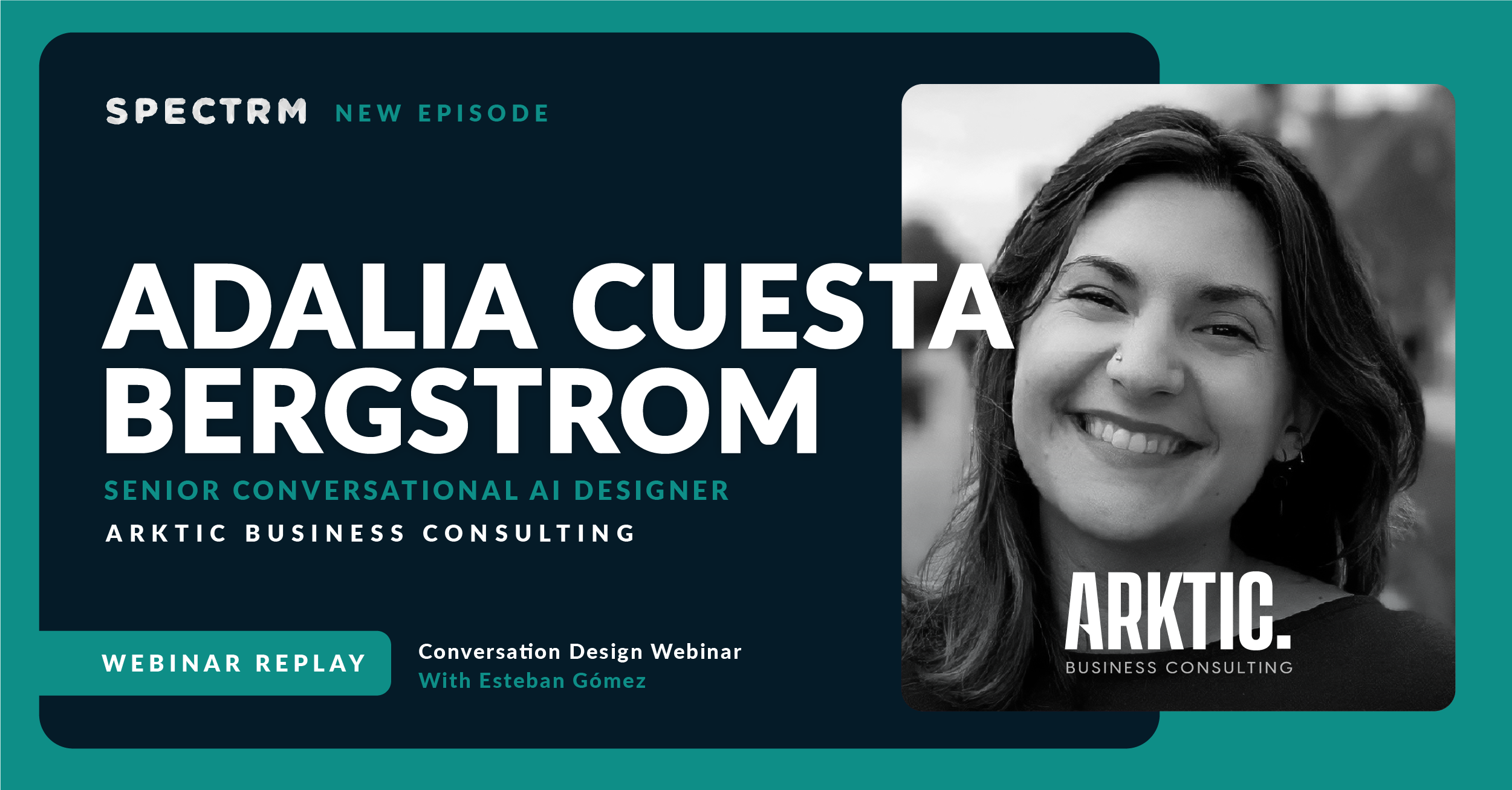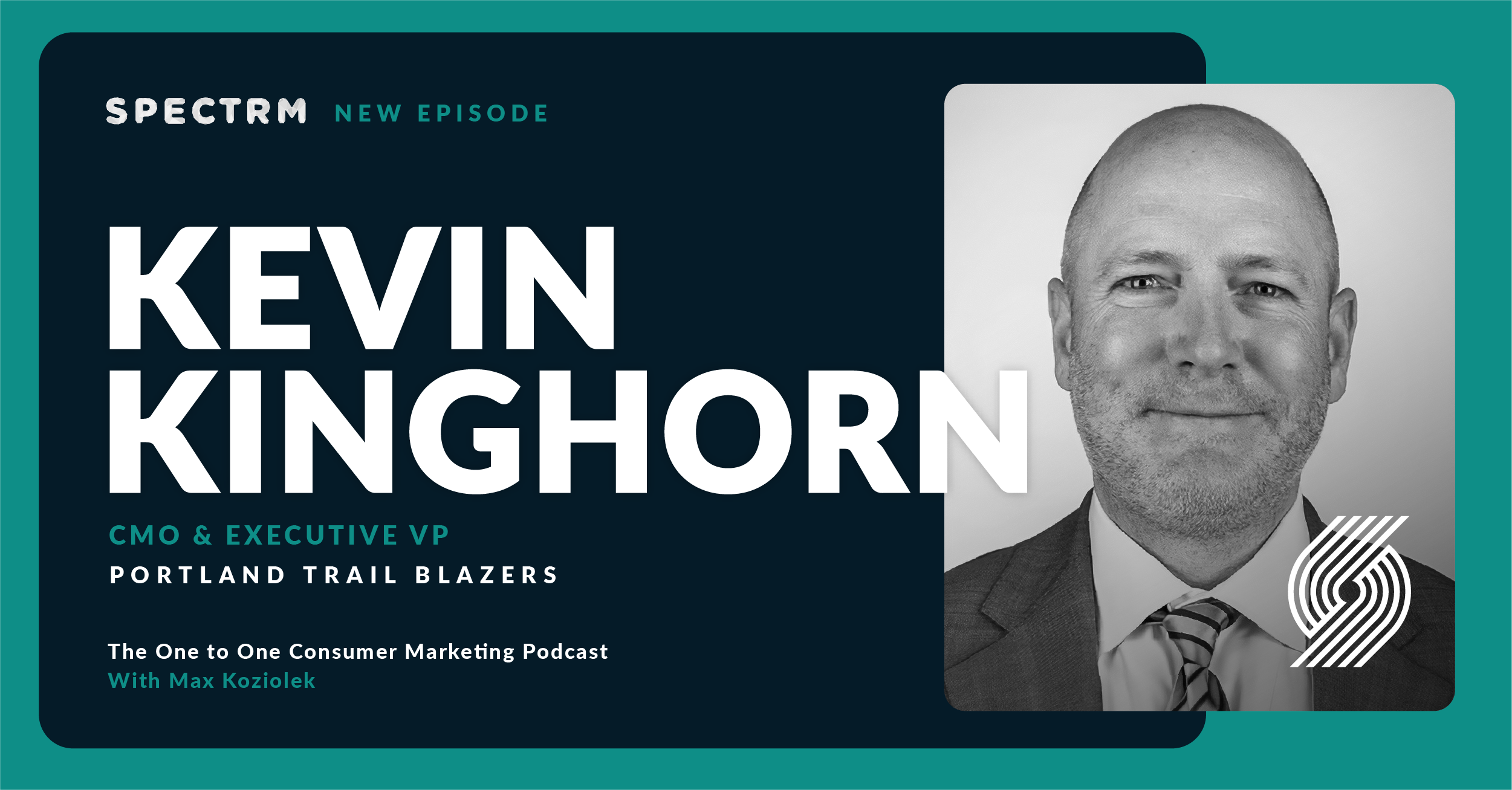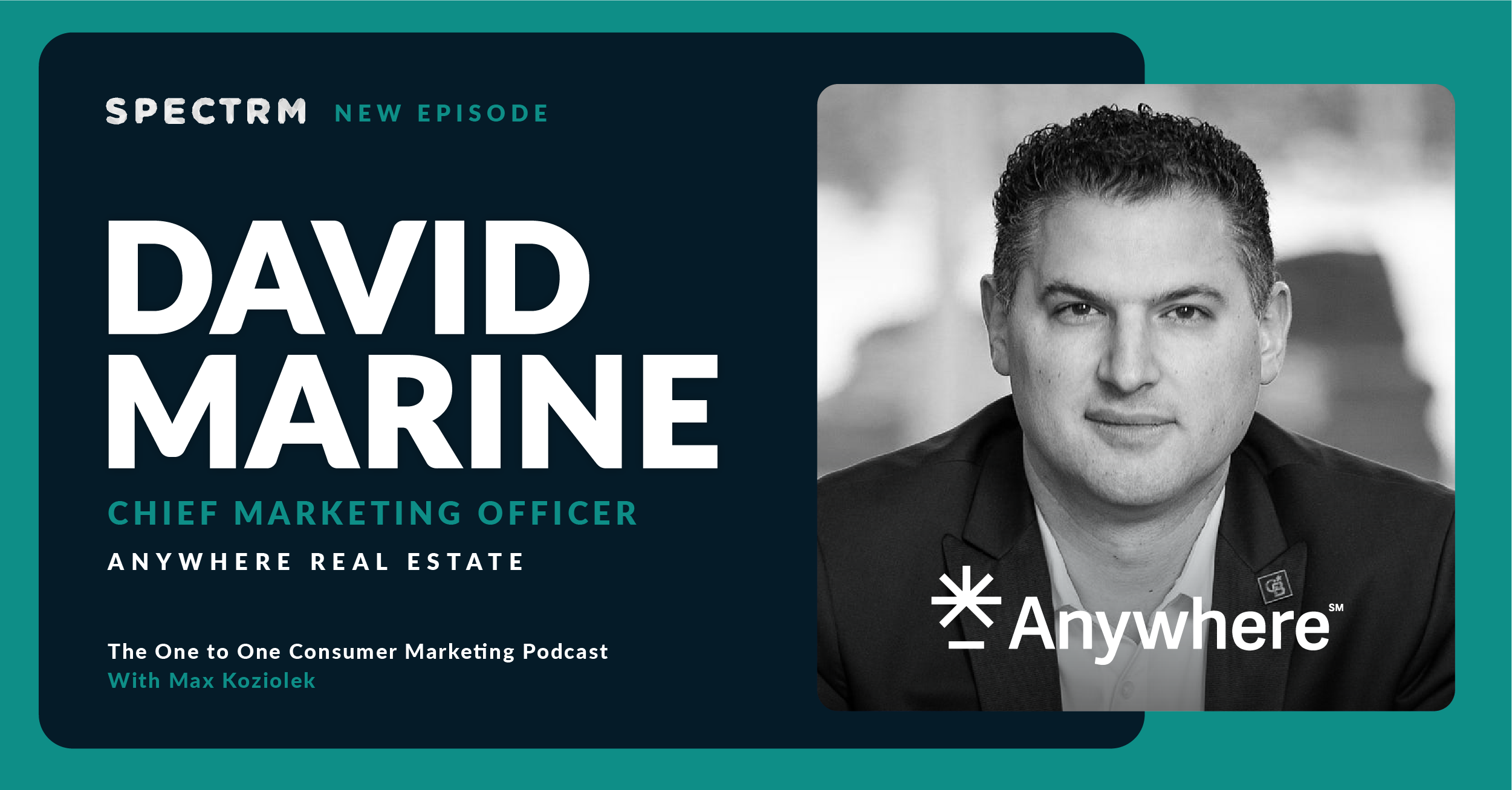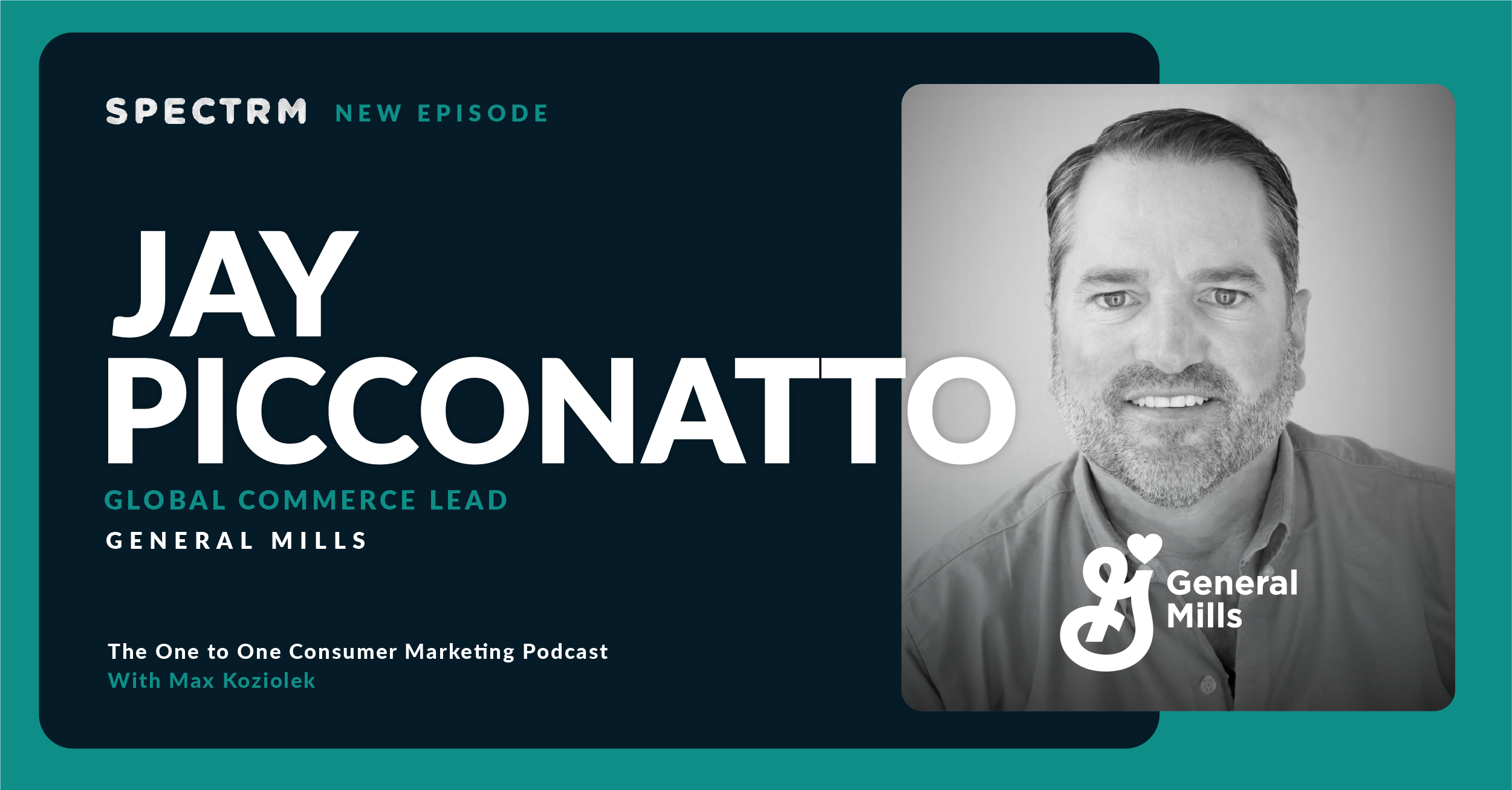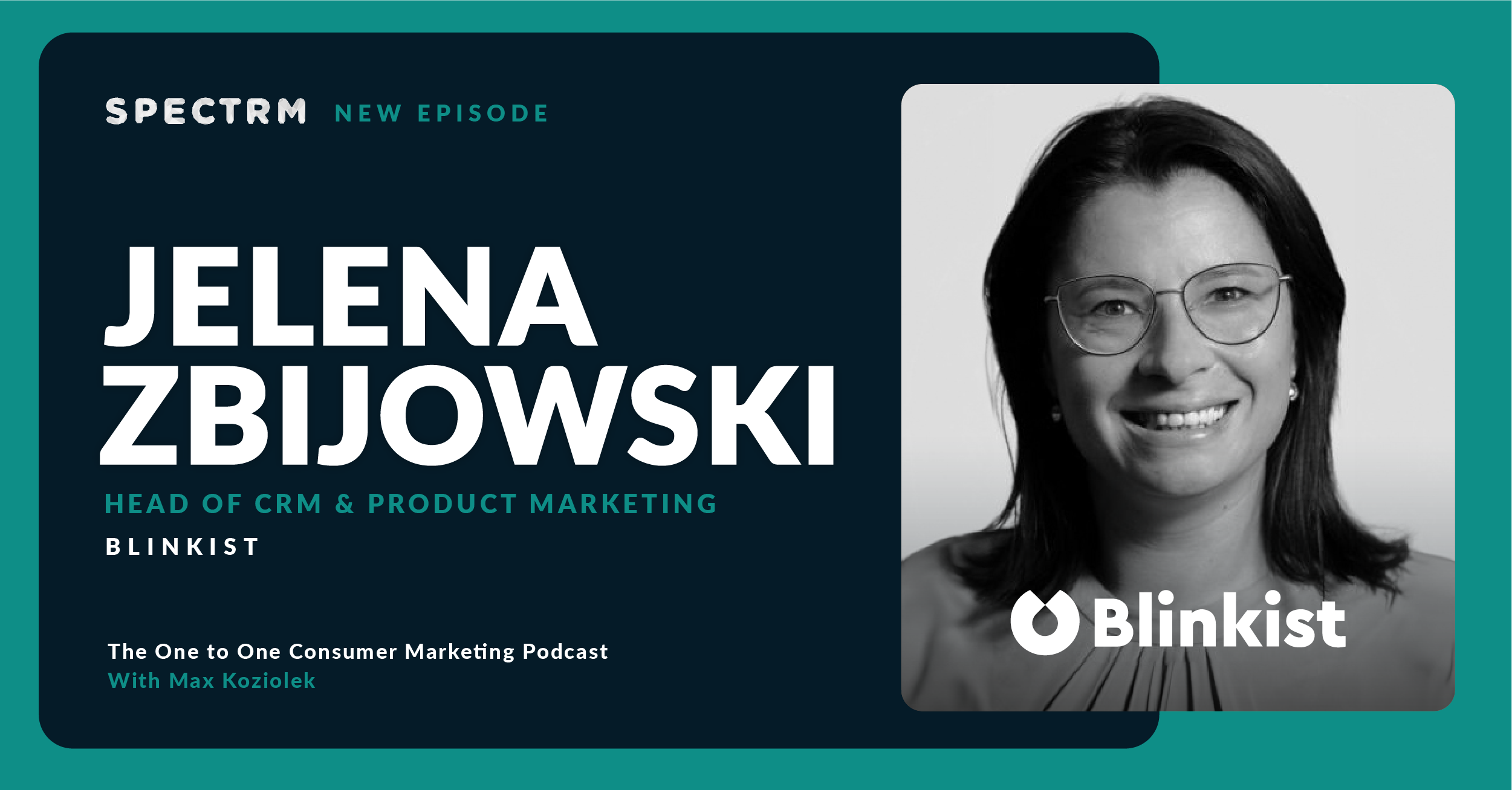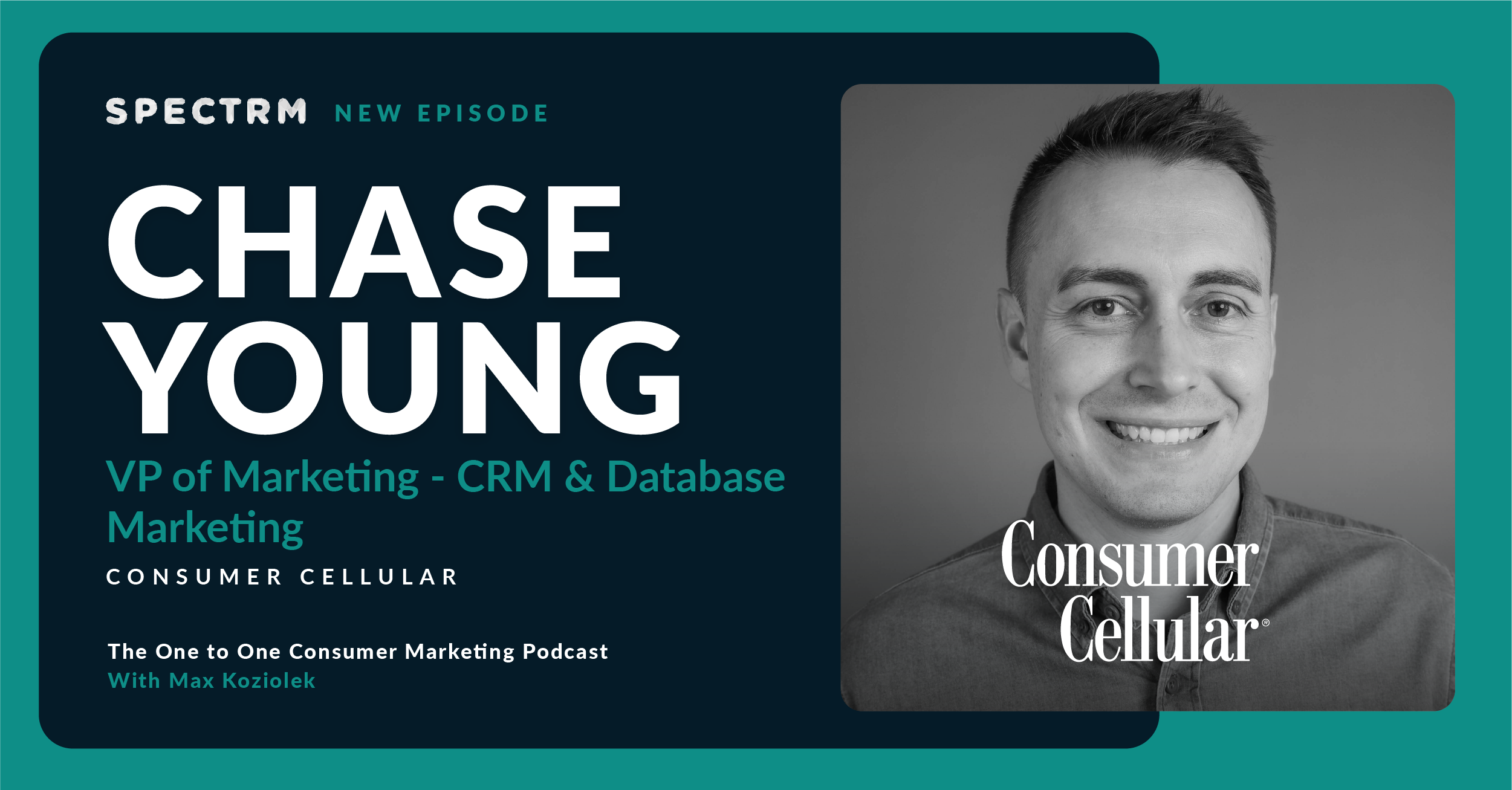Summary
Ben speaks with Jordan Womack, CRM Director at Quest Diagnostics, a leading provider of diagnostic information services. They discuss the unique opportunities to engage with customers in the healthcare space, the value of collecting zero- and first-party data, and why there’s no such thing as an “average customer.” They also talk about the current state of consumer marketing and where companies are lacking in their tech investments, how CDPs will become one of the most useful tools for omnichannel marketers, and how AI will influence consumer marketing into the future.
Topics discussed
- The evolution of Jordan’s career, including what he learned during his time spent managing the loyalty program at Tesco, before moving to Quest Diagnostics as CRM Director.
- What Jordan means when he says there’s no “average customer,” and how to use data to find the connection between signals and behavior.
- The importance of collecting zero- and first-party data, and how even asking a few questions through a pop-up can help you create more targeted journeys.
- How retention and lifecycle marketing are two disciplines to learn, and the importance of creating great experiences at every touchpoint.
- The challenges to consumer marketing in healthcare, and the opportunities to target customers with relevant research and advice to help better manage their health.
- Which channels are working best for Quest, and which KPIs they’re tracking in order to measure success.
- Why the evolution of CDPs is an exciting technology that, when powered by AI, will give marketers the ability to better know and target their customers.
- Where consumer marketing will be in five years, and how AI will influence that change.
So from those early days and realizing what you can do with data, something really stuck with me that I heard in a meeting was, there's no such thing as the average customer. And I always live by that today. And whether you hear somebody say, well, the average customer looks like this or does that, behave like this. Well, you can do better than that with data, right? You can be more segmented, and when you're analyzing as well. So I live by that today, and I tell my teams to try and do that as best as possible.
Guest biography

I lead teams and push boundaries, conceiving of creative campaign ideas that blend insights, data, marketing technology and impactful design to produce highly effective campaigns that drive acquisition, customer value growth, retention and customer satisfaction. I am deeply analytical and strategic, and believe in the power of collaboration to bring together diverse skillsets and ideas to continually innovate and improve CRM performance.
When I’m not obsessing about customer journeys and growing their lifetime value, I might be hiking with my family, playing and coaching soccer or trying to improve my golf handicap (or just prevent it from getting worse!).
Company overview
Quest Diagnostics (NYSE: DGX) empowers people to take action to improve health outcomes. Derived from the world’s largest database of clinical lab results, our diagnostic insights reveal new avenues to identify and treat disease, inspire healthy behaviors and improve health care management. Quest annually serves one in three adult Americans and half the physicians and hospitals in the United States, and our 47,000 employees understand that, in the right hands and with the right context, our diagnostic insights can inspire actions that transform lives.
Industry: hospitals and health care | www.questdiagnostics.com
Subscribe to the podcast newsletter
Transcript
00:00
Intro
You know, from those early days and realizing what you can do with data. Something really stuck with me that I heard in Meeting was there’s no such thing as the average customer, and I always live by that today. And whether you hear somebody say, well, the average customer looks like this or does that behave like this, well, you can do better than that with data, right? You can be more segmented and when you’re analyzing as well. So I live by that today, and I tell my teams to try and do that as best as possible.
00:31
Ben Gibert
Hey everyone, and thanks for listening to and watching the one to one consumer marketing podcast. Today I’m speaking with Jordan Womack, CRM director at Quest Diagnostics, a healthcare company that uses diagnostic insights to improve health outcomes. Jordan, thanks so much for joining the podcast.
00:47
Jordan Womack
Hi, bud. Great to be here. Thanks for having me.
00:50
Ben Gibert
Yeah, I’m looking forward to our conversation. Before we dig into all things kind of retention and consumer marketing, can you give our audience a little background on yourself and how you ended up at your current role?
01:01
Jordan Womack
Absolutely. So I’m a seasoned CRM guy with a background in loyalty and retention all the way back, starting over 20 years ago with Tesco Club card back in the UK. So they are quite a pioneering back then and still today loyalty program. And they really use owned data really well. It really made me realize from a very early age the power of data and what you can do with it to be hyper targeted and relevant to your customers. And from that rich basket data, whether it was in store or ecommerce, they could tell if somebody had recently moved house, lost a job, had a pet, or had a child. And we could use those in clever ways and fun ways, frankly, to give the better experience to customers. And I always remember one example where we saw a trending when people start buying things like diapers and baby products, that they also start buying more kind of beers, wines, and spirits because they no longer go to the pub as much.
01:59
Jordan Womack
So to make their life a little better, we always used to every little helps. We gave them more discounts on those products to really reward that loyalty. So from those early days and realizing what you can do with data, something really stuck with me that I heard in Meeting was there’s no such thing as the average customer, and I always live by that today. And whether you hear somebody say, well, the average customer looks like this or does that behave like this, well, you can do better than that with data, right? You can be more segmented and when you’re analyzing as well. So I live by that today, and I tell my teams to try and do that as best as possible from there. Grocery retail, I went to Telephonica Two, and I was proactively looking at how we retained our mobile phone users in the UK.
02:40
Jordan Womack
And we had a lot of fun with that. It’s really kind of a satisfying job to go out there before somebody even perhaps shown a signal that they may be about to leave. But Proactively building on that loyalty while keep the pressure on the pedal to the metal and keep them happy. We had a lot of success with mobile and channels, of course, but also even direct mail, just surprising people, surprising delight strategies. It was a great time. And then I’ve been in the US now for maybe eleven years. I’ve worked on a lot of digital transformation, so going into some of the older companies where they want to enter the direct to consumer channels and then really teaching them how to do that and how to be customer focused and customer centric with CRM expertise. So that’s been kind of very rewarding in being able to help big companies change mindset and their approach and somewhere in the middle as well.
03:29
Jordan Womack
I worked at Samsung Electronics. So not an old company by any means, but again, lots of data, lots of channels to use at Samsung. So yeah, most recently at Quest Diagnostics where we’ve been trying to shift the mindset and approach to healthcare.
03:42
Ben Gibert
Yeah, thank you so much for that overview. I like your example. I can say from experience with a one year old son that the at home alcohol consumption definitely increased a little bit. I do not go to the bar as often as I used to, so I would be in that cohort for sure. I do want to come back to one thing you said that I love, which is that more than your average customer, right? Like looking beyond, I guess the normal distribution to what are the interesting cohorts that you can glean from all the data that you have? Can you talk a little bit more about that? How is that defined, how you think about retention and loyalty marketing? Yeah.
04:17
Jordan Womack
Well, I think your marketable population is big. Not everybody is the same, not everybody looks the same. And there’s many ways to kind of dig into the data to find those nuances, to see how behavior different right. That might be from your typical segments that you have. So for example, at Tesco we knew people who preferred their approach to using fresh ingredients versus those who used ready meals. So from that you can tell maybe somebody, I guess the assumption is, well, somebody died a healthy or not healthy, but maybe somebody just more time poor. Right. So they may have a high pressure job of working a lot of hours and the ready meals is part of their lifestyle that they have to do to fit in, but maybe their behavior at a weekend is different. Right. So looking for those kind of signals and that’s just all from what people are buying, food wise.
05:03
Jordan Womack
Right. But also using third party data. I’m a big believer in zero on first party data. I’m sure while we’re talking here, it’s not going to be the first time, I say that, but it’s always more accurate third party data. Right. But still there is some usefulness in third party data. For example, home movie data that can tell you signals and what people are looking for in that six month period after they’ve moved home is very different to what they’re looking for in their regular life.
05:32
Ben Gibert
Yeah. An interesting way to supplement the wealth of zero and first party data you have. Right. So not a great way to probably build your segments, but a good way to then use that to your advantage to tailor messaging for them. I mean, I’m sure you were sitting on an incredible wealth of data with tesco and just like the volume of transactional data that you have, I guess it’s a little bit like almost like search, right? Search is appearing into people’s lives. I think the groceries that people buy is a good way to peer into people’s lives as well.
05:59
Jordan Womack
Absolutely.
06:00
Ben Gibert
You also said that in your move to the US. You are now looking you’ve been involved in a lot of digital transformations that shift to direct to consumer. I think that probably tells a little bit about how you feel like the state of consumer marketing is today. But can you talk about that shift and kind of how you see the landscape?
06:16
Jordan Womack
Yeah, I think all companies are realizing that the internet has been around for many years now, but still there are still some companies who are not doing it well right now or could be doing it better. It’s more than just we have a website. Right. That’s just the start of things. The technology is moving so fast, optimizing all of that constantly. So I think even down to what I’ve seen with some of these older companies is especially when the post purchase communications, they perhaps haven’t been the most slick or thinking of customer first. Right. They’ve just been an action happens, so we have to send an email. And I’ve seen some of these companies where somebody may have made a purchase and then there’s six emails in the inbox within ten minutes and really not providing that much useful information. It’s almost sending too much is as bad as not sending anything at all.
07:07
Jordan Womack
So really streamlining things, thinking about the and you don’t need mountains of data to do this. Just put yourself in the customer shoes. We’ve heard that many times. And thinking about, well, what did this inbox look like and what’s the most important message to communicate? So using the technology to streamline, really thinking about that customer journey and what’s the most important thing you need to say right now and what’s the next most important thing you need to say and when.
07:32
Ben Gibert
Yeah, so I assume over the course of doing this with quite a few. You have some sort of playbook, but you tailor it to different organizations and they’re always looking back to the customer. What’s your kind of philosophy behind that? How do you tackle that?
07:45
Jordan Womack
Yeah, I mean, honestly, there’s no kind of hard copy of a playbook. It’s just about working with the research teams. And honestly, what I find, especially with some of the older organizations and there are new ways now, obviously, with social listening, but getting in the call center, the customer service center, and listening to what people are saying is just still for me, one of the most insightful things you can do as a marketer, really listening to the customer. And we can wade through 60 pages of analytics and research studies. But just listening to what they’re saying and what they’re calling about and looking at the data to see what’s driving from those call dispositions, what’s driving the calls and then having the chance to just that two way dialogue deep in a bit further while you have them on the phone to understand. And that’s really how you would build out with cross functioning, of course, with other everybody from the ecommerce team to the research team, to the delivery team.
08:37
Ben Gibert
Right.
08:38
Jordan Womack
Sitting down and thinking, let’s piece this. We used to call like a value chain review, customer value chain, piecing it all together step by step to understand that journey.
08:46
Ben Gibert
Yeah, I find it amazing how much sometimes companies invest in things like social listening, like passive listening, without taking the wealth of data that they have, where people are actually trying to talk directly to the brand anyway. Why not start there rather than trying to go directly into social? I know they have obviously different uses for different types of data, but I think that’s an interesting one to see how brands deal with that. You mentioned zero and first party data as well. So I have to ask, is that something that you saw a big shift in during the digital transformation with these companies? Was there more of a focus on how to deploy that data in retention and lifecycle marketing?
09:21
Jordan Womack
Yeah, I mean, everywhere, ever since those early days, I’ve just really understood the value of zero on first party data. And I think some companies have done it better than others. But even down to the basics, just basic demographics of age, gender, location, that kind of thing can be very useful and more powerful than people think. And I’ll give you an example. One company we wanted to drive our lead capture rates. So there was a great job on social and paid me to drive people to the site and then when they go to leave, pop up appears and give us your email address. So to keep it frictionless, we check the email address. But I argue, well, if we’re incentivizing them to give us something anyway, the value exchange here, let’s capture a few more pieces of information as well. So you can do much more with just three extra pieces of data about what are you looking for, what are your health goals, what’s your age and your gender.
10:13
Jordan Womack
And if they don’t convert on that particular visit, at least you have a bit more data to put them into a lead nurture journey, which can be much more relevant downstream. So with an email address, you can do very little. Of course you can use aggregators to build in data and overlay that, but it’s still not as accurate as what you capture. Zero party levels. So I think that’s kind of the mindset that people have to get into and you’ve got to get the balance right. You’re not going to be able to ask for mounted amount of data, become the bad customer experience at that point. You have to get the balance right between what the customer willing to give us right now in exchange for $20 off or whatever it might be. And I think customers are with the privacy changes happening and cookie diminishment, et cetera, I think at some point we’re going to have to figure out what do we offer to our customers in exchange for the extra data we want them to give us.
11:03
Jordan Womack
So I think it’s going to be an interesting one to see how that plays out.
11:06
Ben Gibert
Yeah, I love that you touched on two things there for me that really stood out, which is what is the value that we’re offering because we’re asking for this data in return. So how do we make that a compelling offer? And also the idea of you could go to a third party data aggregator but you’re probably not going to get data points that are hyper relevant to the journey of this customer with your brand. Right. So you mentioned what are they looking for from a health perspective or like gender is a more basic demographic one, but again, that’s much more useful information to tailor their journey with quest diagnostics than something you can get from another provider. So I think that’s where brands need to find the fine line. And also I agree with you that with privacy changes that should really become center stage because that data is not going to be as available from social media platforms.
11:56
Ben Gibert
We are getting locked out of ad networks. So it’s imperative that brands start to really think about that.
12:01
Jordan Womack
Exactly. And I think it’s also just to get the conversation started, the analogy, you meet somebody. I remember standing on the platform waiting for my training to work. I talked to a guy and brief exchange of hello, went to learning more about his family and what sports teams he likes and then over the years, you know, more and same kind of dialogue digitally or other channels with marketing. Right. Just get something to start the conversation and a relevant conversation and then progressively profile. Right. Every touch mattered. Every touch is an opportunity to learn something else about your customer.
12:35
Ben Gibert
Yeah. And dialogue, right. Focusing on that aspect of it, the back and forth, not just the taking and then the kind of saying things without taking in that data and adjusting your behavior, I think is very important.
12:48
Jordan Womack
Right.
12:49
Ben Gibert
How do you think about kind of customer retention and lifecycle marketing? And have you seen that change over the last few years? Are there things noticeably different from when you first started?
12:58
Jordan Womack
Yeah, I think it’s important firstly to break down retention and lifecycle marketing into two distinct disciplines. In my mind, you can’t really do lifecycle marketing well, and it’s less impactful if your core customer journey, the transactional journey, isn’t working. Customers want things to work as expected, work first time, things to be made clear and easy. Right. No matter what industry you are in. Working many, that’s ultimately what people want. They want value for money, they want things to work and they want things to be simple and clear. But the most important thing, as I mentioned earlier, is understanding the true customer journey, getting everybody together, right. And understanding the series of interactions and the different pathways that a customer may go on, and waiting each of those interactions and events to know what the really important ones are. And again, call listening can help with that.
13:47
Jordan Womack
But also people intellectual knowledge, people working at the company can help with that and just some common sense as well, frankly. But for example, the example I gave earlier was with too many emails with wrong information, or just frankly unhelpful information, people may say it’s a waste of my time if somebody spends 10 seconds doing something right now, tyra is precious, right? It’s a waste of 10 seconds and somebody will feel that. So if you can imagine at Quest Diagnostics, for example, the most important step in their journey, the most important interaction with our brand, is when they go into that patient service center to have their blood drawn. That’s what everything leads up to. And if that’s a bad experience, if somebody’s waiting far too long, or if somebody doesn’t even say hello to them or is on a telephone while they’re trying to draw blood or something.
14:35
Jordan Womack
Not that happens at Quest, but just if you can imagine that they would never be coming back to Quest. So no matter how frictionless the ecommerce site is, no matter how great our lifecycle programs would be or the rewards, people are not going to go back to Quest if that was the case. Same with any industry. It’s about identifying what those most important moments in the journey are.
14:55
Ben Gibert
Yeah, I agree. It’s also always kind of incredible. Like you said, we have this vision sometimes of a very linear funnel, right. That’s how we like to think of it as marketers. Obviously, we know that’s the ideal journey. It’s not always the case, but really digging into what is the customer doing at each moment is the really fundamental marketing work that can be easy to forget when you’re lost in acquisition campaigns or what the specific email should look like. Really at the heart of it, you should come back to it, what does my customer need in this moment and how can I serve them? And I think that’s where great marketing comes from. I mean, you have probably seen a lot of challenges, right? They might have changed over the years as well. But can you walk through in trying to build a great retention kind of marketing program and then the follow on lifecycle marketing programs, what are some of the biggest challenges that you’ve seen?
15:43
Jordan Womack
Yeah, I think with lifecycle marketing, especially in healthcare, it’s really being quite honest with yourself as a company. And how frequently should we be engaging with somebody? How much does somebody want to hear from us in their life? I mean, let’s be honest. Healthcare people may say not the most exciting subject in the world, right? But compare that to something like a groupon or something like that, where people sign up to receive five offers a week on spar treatments or whatever that may be, that’s a very different relationship to perhaps healthcare. Healthcare is just, okay, I want you to help me manage my health and do it well and don’t make mistakes. That’s what they want. But there is still opportunity to again, learn about them and give them relevant, engaging content about the latest clinical studies, the latest scientific findings, or just frankly, for somebody in your particular age, demographic cohort, what should you be thinking about in your health journey?
16:37
Jordan Womack
Right? So that’s what we try to do at Quest. So men who enter their 40s, there’s certain things they should be doing more. Women who enter their 50s, there’s certain things they should be doing more. So educating them, making sure we are front of mind, so when those need states do come along, we are there to help them. It’s a bit harder to change behavior, right? The behavior were trying to change is direct to consumer testing. Rather than go to a doctor who then refers you. But it’s more like, well, if you think there’s maybe something that you curious about or that you want to check, then you can get the test directly and then based on the results, decide whether you want to go to the doctor. But again, you’re not going to drive somebody to get blood work done every week. It’s just not something that people want to do.
17:25
Jordan Womack
So it’s about thinking about that journey. And then in retention, like, well, what is the right measure for retention in healthcare? It’s not every week. It’s not is it every year? Is it every 18 months? So we had to really define what retention meant in healthcare, how often we expected to see them.
17:42
Ben Gibert
Yeah, I love those examples too, because it comes down to, like you said before, right. You don’t just take the carbon copy of a playbook from some other industry or some other company you’ve worked at, but you really look at what are the needs of the business, what is unique to our relationship with customers in this business. And let’s define what successful retention means with those guardrails. And not just because some other company defines it in this way. And do you find that to be a challenge sometimes when you’re working with executives, when you’re trying to frame like an understanding of what those programs look like, how you measure them, I think.
18:15
Jordan Womack
It just takes time to educate them a little bit and manage up. Right. And what can you especially times of economic uncertainty like we’re in now, there’s a lot more, I feel like, pressure, especially on the marketing, on the acquisition team, right, to really choke the odors of that cow and milk the database for as much as they can and get it. And then customer experience may go out at the door. Maybe we’re being a bit too aggressive with, hey everybody, just buy everything. Really kind of me kind of just saying, hold on, my job really is the guarding of this database, right? I’ve got to protect this database for the long term, not just the short term. So that’s definitely one of the challenges that I think CRM folk, whoever I speak to, they face that as well.
19:00
Ben Gibert
Yeah, how to protect the database from the CEO that just wants to send another email. Yeah, I think that is a struggle for a lot of CRM marketers, like you say. Another thing that a lot of people I’ve spoken to on the podcast recently with the focus on retention and loyalty is like the channels that they’re using to interact with those customers, right. How do they find the right mix? How do they get their timing right? Are there particular channels that you’re seeing work very well? Are there other ones that you’re seeing decline in performance?
19:29
Jordan Womack
Well, email is actually doing really well with Quest. I think sometimes. It was definitely driving a lot of site traffic, which is what we wanted to do. We had a very sizable database from people over the years visiting Quest Diagnostics, subscribing to email, and it wasn’t really used much. So, again, they didn’t really have CRM expertise. So there was a database. The first step, of course, is to clean that database up because the true size of that database had to tell people, even though you think it’s X million, it’s probably more like a few kind of levels below that when you cleaned it up, but it was quite untouched. So we built some engaging and did CRM properly. We built some engaging programs to get them in. But email is very low on subscribe rates and I think it’s down to the fact that were being targeted and relevant and good click through rates of sometimes up to 1011 percent click to delivery rate, which is really great.
20:24
Jordan Womack
So I think people may have been like, oh, this is interesting, and an email from Quest and some insightful information and they’re engaging well. They also have an app which is predominantly about where people go to get their results. So sometimes people go to get results, it’s not the most pleasant experience, right. They might be a bit nervous, so you don’t want to be really too disrespectful there and plaster advertisements all over the place. But SMS was also a strong channel just again for keeping people informed about their journey. I remember that at Samsung though, we had so many channels, push notification was very strong, especially for lower funnel and intent. And to those kind of one day sale, push notifications worked very well. I feel that perhaps push has done to decline a bit now across industry with lots of people, lots of companies using apps and notifications, but also at Samsung, there’s lots of apps that they have.
21:19
Jordan Womack
So they have an app for Samsung, TV for Samsung Rewards, the native app built into the Android operating system. So not everybody has all of those apps. But the great thing is they had different kind of users and profiles using different apps. So you gave them a lot of possible touch points to use.
21:37
Ben Gibert
Yeah, I think that you’ve touched on quite a few channels that are obviously kind of like the foundation for a lot of CRM programs. And interesting to hear that email was almost kind of an untapped channel when you started at Quest, because I think that’s where most people would start, right. We have that contact point, like we have this intent and I’m glad you pointed out scrubbing the database as an important key step to make sure also things like deliverability subscribe rates look good as you start. And you touched on app notifications, I would agree with you as well. That’s something that we’ve seen kind of go down as people have been getting more and more apps, right. It’s harder to reach them as people. There’s been a lot of premium placed on Focus, kind of like reducing app notifications, that we’re seeing a struggle there.
22:22
Ben Gibert
I mean, in all that, right, I think that you mentioned all the channels that Samsung has. Brands are trying to personalize marketing one to one, right. Doing that at scale is difficult. You have all these channels, you have all these different places you could do it. What for you, how do you connect with people today? How do you connect one to one? And do you have a particular approach that really defines that?
22:42
Jordan Womack
Well, depending on the industry, I think insurers, when I was at MetLife and Mass Mutual, by far our most valuable touch point was, believe it or not, was still the outbound call when somebody has actually just worked with the call center. I’ve spent all years and years on digital and trying to kind of create personalized email follow ups, et cetera. But what people really wanted is just a call, frankly to just explain their policy to them and what happens next and give them a chance to ask questions. So of course it’s a lot more costly to outreach to everybody. So making sure you really understand what channels your consumers are engaged in and what they’re using the most at any given point in time. So you can certainly use email that people are heavily engaged with email and all of the email platforms now will tell you who’s your most engaged base at this moment in time, by what channel and whether.
23:36
Jordan Womack
But I think there’s many tools out there now which is send time optimization, for example, making sure you send the email at the moment where they’re most likely to be engaging with their inbox. Personalization starts with of course, having your segments right and then knowing what is relevant content and not just well our database is 30 million so let’s just send it to 30 million and change the first name we’re personalized. It’s not that it’s like well, I always say retention strategy is also as much about knowing which customers you don’t want as the ones you do want. Some customers do cost a lot to service and the data indicator will point to the fact that they’re likely not going to be here for the long term. So what’s the point? Just continue to invest money in them. So really using that data to know who your best customers are, who’s likely to be there for the long haul, using tools such as send time optimization, relevant messaging and the right channel to really prolong that lifecycle.
24:34
Ben Gibert
Yeah, so true. I love the breakdown of specific examples, but also that knowing who not to contact and really knowing who your best customers are when you look at that sort of thing, is there kind of a North Star KP? Are you looking at lifetime value? What are the metrics that you’re thinking about when you build out these types of programs?
24:54
Jordan Womack
Yeah, depending on the program. So obviously had a lot of success actually with reactivation programs and just trying to identify which one should we invest our time in, but also retargeting. So using both email and social. So the truest sign of intent is when somebody at your site clicking on products and putting them into their basket perhaps, but they’re abandoned. Well, most likely, but certainly one channel they’re going to after that is social to kind of research a bit more and ask people. So we introduced, we had the email, this is a number of companies I worked at, but we started with an email more cost effective channel and then also added onto that social retargeting as well. So if that’s where they are, let’s try and stay front of mind and. Retrigger that shopping behavior in their mindset and get them back to the site.
25:46
Jordan Womack
So those data points that you’re learning from your website are just invaluable, as I mentioned earlier, the progressive profiling that you’ve built up over time, using that to really personalize all of those downstream programs, whether it’s onboarding, whether it’s just kind of seasonal promotions, or whether it’s all the way down to wingback or reactivation.
26:05
Ben Gibert
Yeah, a great way to not just tailor your messaging to that specific moment in their customer journey, but also that specific customer and who they are. That’s a great way to combine them. I mean, looking forward and maybe in the present a little bit as well, what kind of technologies or what kind of approaches are you particularly excited about that are kind of in the market?
26:27
Jordan Womack
Yeah, I’m going to try to not mention AI. I mean, I have to mention the elephant in the room, but it’s just everybody from the family cat to your grandmother is talking about AI right now. It’s interesting for sure, and who kudos. But I really think CDPs are incredibly important on lifecycle, marketing and retention and they’re not new. Right, but I think I can’t even get past the first sentence without mentioning AI. But I think AI will make them better and more powerful as well going forward and I think CDPs will become more mainstream. I remember 1011 years ago I was working with a company and I thought, well, I want this data point and I want to know when did somebody last call and complain and what were their sentiment and website behavior? And now I realize I was trying to build a CDP without realizing it back then.
27:16
Jordan Womack
But more companies adopt this omnichannel approach and really, that can’t be done without the CDP to really harness that zero on first party data and then ditch in anonymous data until you can determine who it belongs to. So it’s going to be very interesting to see how things play out with Cookie Diminishment and what the big technology companies out there are going to do to replace that and see how that all integrates with CDPs. Of course, AI, I think it’s going to make things interesting. It’s going to perhaps offer new channels we didn’t even know exist at this point today.
27:51
Ben Gibert
Yeah, I think that’s a great call out to focus on the CDP. Because even though it is not so brand new, like you said, a lot of the things you’re talking about in terms of unifying the journey, understanding how to engage them. All of that kind of relies on a healthy, like an organized database that unifies your customer journey in some ways. And there are going to be a lot of interesting things that happen with AI in that space as well, beyond just like the actual channels on which people engage. And you mentioned also Cookies Deprecating that I think will be a really big one as a lot of these ad platforms move towards probabilistic modeling, removing the Identifier out of that so that they can get around privacy. Zero party data is going to be really essential to the companies that do really want to know who is this person and how do I meet them on their journey specifically in that moment.
28:41
Ben Gibert
So it’s going to be an interesting time.
28:44
Jordan Womack
Yeah, I mean I’ve always been a champion of zero. First party data cookies going away. I kind of, like, had a little smug smile on my face thinking, I’ve been telling everybody for such a long time how we need to get our zero. And now I’m pleased to see the companies are building up their own walled gardens and thinking about how can we get our consumers to voluntarily give us that information and make it clear what the value changes.
29:07
Ben Gibert
Yeah that’s great. You’ve seen the writing on the wall for a while and also seen the value of it which is great. In that frame of mind, what are kind of three pieces of advice you would give other consumer marketers or things you wish you knew at the start of your career that you know now?
29:22
Jordan Womack
Yeah, I mean things are moving so quickly. I think consumer marketers need to just you are in for kind of like lifelong learning in your career and embrace that right and adopt it and I think it’s for the better. I mean, you know, maybe naively when I first started I guess I thought we learned the first five years learning your job and then the next 45 years doing your job. That’s really not the way it is. It’s your learning and then learning some more and then teaching people as well. Passing on what you’ve learned is just I think you sometimes realize when you are explaining something to somebody what you don’t know. Right? And it’s a two way learning process. So I think as well realizing that there’s so many platforms and technology and different technical skill sets out there you’re never going to know it all.
30:08
Jordan Womack
You have to surround yourself when you become a leader. Surround yourself with diverse knowledge and experience and accept you won’t know it all. You can feel quite ignorant at times in this industry. I don’t know that or I don’t understand this, but surround yourself with the right people and as a team you’ll work things out and then I think also it’s very important to be clear with your manager what you want. Right. I think don’t just sit around and let somebody else try and manage your career. What really interests you, what you want, other channels you wanted to get experience with that you haven’t done before. Are there certain industries you want to move into? But certainly with your driver, with your manager put yourself in the driving seat right and a good manager will support you with that and put you in the right places and coach you in the right way.
30:58
Ben Gibert
Yeah, I love that advice. I think it’s very good advice. Never stop learning. Build a team around you to stay up to date with the things that you couldn’t hope to stay up to date with and really manage up to get what you want out of your career are things that I think a lot of young marketers should take very much to heart because that is fantastic advice. Jordan, I think on an ending note, no one likes to make the big predictions, but five years from now, what do you feel like the future of consumer marketing looks like?
31:26
Jordan Womack
Yeah, the elephant in the room again. I think AI again will make things interesting. I still feel that humans will need to drive strategy and come up with the big ideas. Right. I do think that AI will make us better at our jobs and being better at our job means being more efficient as well. Right. So I think some of the things in particular, like coding, some of the creative message crafting, I think AI will start to certainly make us better and leaner at doing those things. And I’ve seen a few demos and been conferences where literally you are telling chat generative AI just create this email for this particular use case and within 10 seconds it’s created the email and then you can go in and tell it to refine the CSS or the HTML coding of it and it’s done it. That may take two, three days in today’s world, which potentially could be done in a matter of seconds.
32:18
Jordan Womack
So should be good that we can maybe take on more and have a broader skill set ourselves right. And do more things. I also think that in the purchase journey, I do think that AI will help people. Typically chat today has been done post purchase and support and servicing. I think people will lean on chat more powered by AI to help them make the purchase decision in the first place. Maybe they’re not sure they want more information. They can have that two way dialogue with the robot who will guide them and give them that person confidence. Right. I think people will start to trust it more even though now it is very scary change over time. I think people will trust it. And I think the other really interesting thing that I’ve been reading a lot about lately is the metaverse and especially some of those companies where they may allow their consumer to immerse themselves into this virtual world and how people are behaving in that virtual world.
33:12
Jordan Womack
There again, they’re all data points that’s zero and first party data points about how people are thinking, what they want, how they’re behaving. I heard somebody talk about it, this convergence of physical and digital, call it the physical state in the future, which is a lot to take in. But I do think there’s again, a big touch point and immersive experience where those behavior and actions are going to be creating a lot of data about people.
33:37
Ben Gibert
Yeah, I couldn’t agree more. I think the Generative AI will transform how we do our jobs, but it’s not going to replace the fundamentals of what marketing needs. Right? Like, how do we guide the strategy?
33:49
Jordan Womack
Right.
33:49
Ben Gibert
I love that you talked about moving chat into marketing use cases, because that’s obviously exactly what we do at Spectrm. So that’s music to my ears. To also hear that, you see the space changing in that direction, and that’s what we’ve seen a lot with customers, is like, how do we build guided experiences through chat, through messaging? That is increasingly how people want to communicate. And also the last thinking about the metaverse and just the amount of data that it generates, I had someone on the podcast earlier this season talk about the sheer volume of data that’s generated from, like, 5 seconds in the Metaverse. We think we’re swimming in data right now in the digital world. When we start entering that world, it’s going to be a very different challenge. So I think it’s exciting times ahead for marketers. Jordan, that was a lot of fun.
34:35
Ben Gibert
I really enjoyed hearing from your experience. I think that was great. If people want to learn more about you and what you do, where should they go?
34:42
Jordan Womack
Yeah, the best place is LinkedIn. Just definitely hit me up with a message. I’d love to connect with folks out there and keep learning together.
34:50
Ben Gibert
Yeah, absolutely. You heard it’s Jordan Womack from Quest Diagnostics. Go on LinkedIn. You can DM him feedback from the episode. Any questions? If you want to connect, and same to me, always looking for feedback. If you have guest ideas, don’t hesitate to reach out. And if you want to learn more about Spectrm and what we’re doing in the messaging space, go to spectrm.io or check Spectrm out on LinkedIn. Jordan, thanks so much. It’s been a pleasure.
35:15
Jordan Womack
Thank you, Bet. It’s been great. Thanks a lot.
